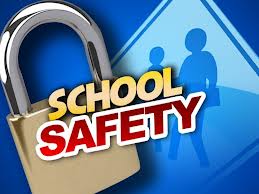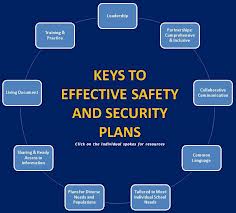Local School Safety Programs
What is my local school doing to provide a safe and secure environment for our children? This is something that all parents are wanting to know. They need to feel that the school district’s are making progress in putting a plan together and going forward with it.
US Homeland Security Administration has a program with funding and training available for every state that is willing to go through the hoops to get this money and follow the guidelines.
The program is called the FY 2013 Homeland Security Grant Program.
HSGP is comprised of three interconnected grant programs:
• State Homeland Security Program (SHSP)
• Urban Areas Security Initiative (UASI)
• Operation Stonegarden (OPSG)
Together, these grant programs fund a range of preparedness activities, including planning, organization, equipment purchase, training, exercises, and management and administration.
The funding for these programs is big, $968,389,689.00. It is a task though to get all the appropriate requests and paperwork filled out. Then follow all the guidelines so that you meet the requirements to get some of the funding to make upgrades to the buildings, and educate the appropriate people on how to train the students and staff in the correct responses to and attack. This all seems like a good idea, but it appears that it isn’t a program that can be implemented quickly.
Another government entity is National School Safety Center. there mission is the following
The National School Safety Center serves as an advocate for safe, secure and peaceful schools worldwide and as a catalyst for the prevention of school crime and violence. NSSC provides school communities and their school safety partners with quality information, resources, consultation, and training services. The National School Safety Center identifies and promotes strategies, promising practices and programs that support safe schools for all students as part of the total academic mission.
WHAT WE BELIEVE
The National School Safety Center believes that schools have the choice to create and maintain safe schools or to return their institutions to safe, secure and effective places of learning. We believe that this work is best done with the help of school safety partners. We believe that today great opportunities exist to apply the best of school safety research and practices to the vision of safe schools for all students.
NSSC and SCHOOL CRIME PREVENTION
The National School Safety Center was established by Presidential mandate in 1984 by Ronald Reagan as a joint program between the United States Departments of Education and Justice. The Center now operates as an independent non-profit organization serving schools and communities worldwide providing training and technical assistance in the areas of safe school planning and school crime prevention. NSSC has been a long-time leader in conducting school site safety assessments. In addition, NSSC publishes a variety of publications and training videos that support safe and welcoming schools.
They have a site safety assessment service that is open to all K-12 schools in the US. They will assess your school and go over any areas that might be a potential areas that are overlooked and could be a non-secure area.
Key factors are examined that could impact the education of the students and safety of the staff, faculty and students.
Here is a list of some of the things they will look at:
Existing school safety plans
Crisis response and disaster mitigation plans
Anti-terrorist measures
The condition and safety of the facilities
The use of environmental design to prevent crime and disruption
School Safety policiies, practices and procedures
School discipline practices
Employee recruiting, selection, supervision and training practices
The presence of gangs, weapons, drug and alcohol abuse
The prevalence of bullying,hazing, hate-motivated behaviors
Social climate ( staff, students, and parents)
School /law enforcement partnerships
Emerging school safety trends, issues and concerns
This was established by a presidential mandate in 1984, this is a good program that should be taken advantage of by all schools.
Locally Spokane School District 81 has a lockdown procedure that is to be practiced once a year. It consists of an alarm being sounded and then everyone is supposed to clear the halls and stay in the classrooms or offices. Certain people are assigned to manually lock all non-electric locking doors. After halls are cleared all doors are to be locked and blinds closed and lights turned off. That is the extent of their procedures in the Safety Regulations and Procedures Lockdown manual.I was unable to find any other documents that had a step by step procedure in the event of an assault.
Central Valley SD does not appear to have a lockdown procedure in their documentation on their official website. They do have a Sheriff located inside each of the two high schools. I did find a small article about a lockdown due to a police search in the area of about 8 schools and the comments were thanks to the district for telling them what to do. I am assuming this must have been a phone call as there was no policy available to follow.
East Valley School District in the Spokane Valley has a very nice Emergency procedure plan on their website. It is listed below.
Emergency Procedures
Parent Procedures
If an emergency situation occurs, parents are asked to follow the procedures below to help with parent/student reunification and aid with traffic flow. We will work closely with the County Sheriff and other Emergency services to keep students and staff safe.
Lockdown (Intruder on campus or police order)
1. All school personnel have been trained in lockdown procedures. They will be doing their best to insure that all students are being held in a safe location on campus.
2. In a lockdown we will not be able to answer incoming calls or make outside phone calls. DO NOT CALL YOUR STUDENT’S CELL PHONE. Within minutes the police, who will secure the neighboring streets and the building perimeter, will assist us. Parents will not be allowed near the school in a lockdown.
3. Students will be kept inside locked classrooms with the blinds drawn. No one will be allowed to leave the classrooms/secure rooms on campus until the lockdown is lifted.
4. All students and faculty/staff will remain in the lockdown mode until the police department lifts the lockdown.
5. Parents may come to school to pick up their student(s) when the lockdown is lifted. Students who drive will be allowed to leave.
Restricted Access (Red alert, no specific threat)
1. Access to the building will be restricted, with all doors locked once students have entered in the morning. Parents wishing access will need to call, to wait to be met at the door, and provide identification.
2. Students will not be allowed outside for recess.
3. Inside doors will remain open.
4. All personnel/visitors will be required to wear identification.
Evacuation (Fire, bomb threat, and/or police order)
1. If we will be evacuated for longer than 30 minutes, students will be walked/bussed to the off site location. The parent/student reunification teams will assist parents and students.
2. To pick up your student during the Parent Student Reunification process, give your name to a reunification team member along with identification and a student/staff runner will bring your student to you.
3. While you are waiting for the student/staff runner you will be asked to sign a parent release form. The Reunification Team member will have that form for you to sign.
Natural Disaster (Earthquake)
1. All school personnel have been trained in procedures for a natural disaster. The have assigned roles and will be doing their best to safely care for your students.
Assume that the school phones lines and cell phone lines will either not be working or will be busy.
2. Please give school authorities at least one hour to evacuate the classrooms, conduct building searches, and account for all people before calling the school.
During Parent Student reunification, give your name to a reunification team member along with identification and a student/staff runner will bring your student to you.
3. While you are waiting for the student/staff runner you will be asked to sign a parent release form. The Reunification Team member will have that form for you to sign.
This is what i would like to see each school and district have as a plan for emergency situations.
West Valley School District in Spokane Valley also has an emergency and evacuation plan. Their plan is more about where your child will be staged in the event of an evacuation and the procedures to follow. It looks like each parent or guardian must sign this for your child to be allowed to go to school. It is a good plan, but does very little in the event of an assault on the schools
Cheney School District has no emergency policy available to review.
Medical Lake School District has the SafeSchools alert Program in place and a very good Emergency preparedness plan. It outlines all the proper procedures and what is going to happen. It is very good. You can go to their website and read it under the subheading emergency preparedness and recommend it to your school or district.
I will be making additional post with recommendations and responses from the school districts as they become available.


One reply on “Local School Safety Programs”
[…] have worked on many school over the last 20 years, so I have a unique view of school safety. First off, I might mention that statistics show your child is more than ten times safer riding the […]